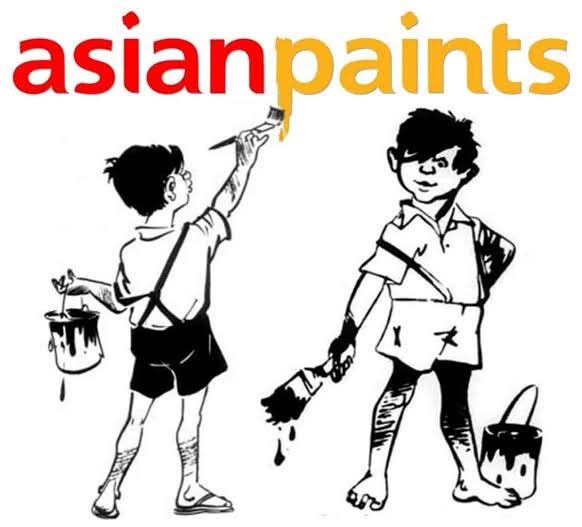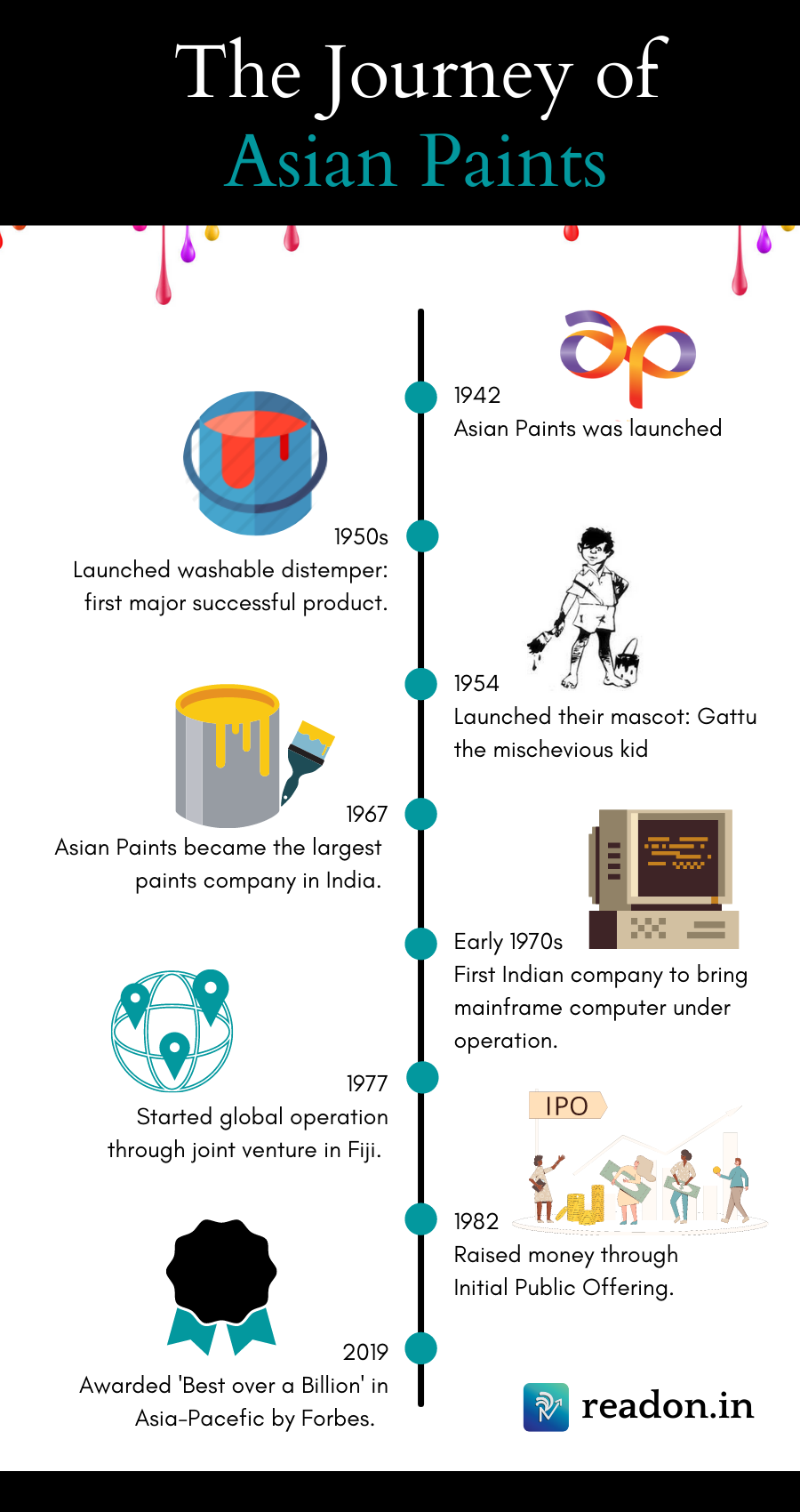Asian Paints: A Master Stroke in Consumer Behaviour
Early 1940s - war, independence and partition. Amidst it all, a small company came, saw and brushed through to become the largest paint company in India.
When an opportunity is grabbed with a clear vision, it sparks a splendid creation. Such is the story of a daring man who set out to build a company that went on to become the largest of its kind. Such is the story of Asian Paints.
Back in the days, before India was declared independent, the paints sector was heavily dominated by foreign companies. The industrial paints industry was extremely price-driven, so the one who kept the lowest price, would win the customers. The risk was high.
But, there was this one man who didn’t just find an opportunity in this risky industry, he also challenged the age-old conventions of doing business.
He dared.
How Asian Paints found its niche
In 1942, during World War II, the Quit India Movement was launched by Gandhiji. Everything was in chaos. Thanks to the movement, the sentiments of the nation had turned in favour of Swadeshi goods.
Now, this created an opportunity for the domestic paint companies. But, decades of dependence had made the existing companies rusty: they did not understand their consumers well enough anymore.
It was under these circumstances that Champaklal Choksey (founder) and his three friends started Asian Paints, which went on to become the largest paint company in India.
Here’s what they did.
Instead of tapping into the industrial paint market, they ventured into the decorative paints industry. The decision was based on careful observation.
In those days, Indian houses were painted with dry distemper (chuna). It was cheap but came with problems such as being easily worn out and staining the clothes of the passerby. That was both an opportunity and threat for Asian Paints. Opportunity to sell them the alternative for chuna and a threat because they had to compete with a low-cost product.
Now to get someone to adopt such big-changes at once wasn’t going to be easy. So they started small.
For instance, in Tamil Nadu during the Pongal festival, and in Maharashtra during the Pola festival, the villagers worship their bulls in which their horns are painted. This created an opportunity to sell bright colours packed in small quantities.
Alongside, they had also built a nice rapport with small-town shopkeepers. Given their small scale of operations, large distributors did not want to indulge with them. But even this situation was an opportunity for them, as they could now pamper the shopkeepers.
Then came the final move. During the 1950s, they came up with washable distemper similar to plastic emulsions but at a low price. The product was good and it was marketed well.
The distemper was a big success that was supported with their brilliant advertisement campaign: ‘Don’t lose your temper, use Tractor Distemper.’ This was further promoted by giving it the face of a mascot named Gattu.
Asian Paints used such creative advertisements throughout their journey. The result?
In 1967, it became the largest Indian paint company in terms of revenue within 25 years of their commencement.
Now to sustain this growth, Asian Paints brought in technology during the 1970s by installing a mainframe computer. It was the first Indian company to do so. You will be even more surprised if we tell you what they used the computers for!
Data analytics to forecast demand. Yep, in 1970, Asian Paints understood the power of analytics and data mining!
This move was one of the major contributors to Asian Paints' competitive advantage that kept the business ahead of its competitors. It enabled them to supply material multiple times a day to its suppliers, thus keeping them adequately stocked (neither very high, nor very low).
To this day, Asian paints is the leading company in India and 3rd largest paint company in Asia.
Here are some of our key takeaways from this story:
Listen intently to your customers, and keep questioning your basic assumptions. Also, if you want to identify business opportunities, you will have to keep your eyes open: there are abundant opportunities available. Only a few sense it, and only a small fraction know how to tap it.
Serve your customers well and they will serve you back: This is heard very often. But, what’s not heard is to serve all your stakeholders well. Stakeholders such as creditors, suppliers, distributors, etc. will stand with you in times of hardship if you stand with them.
Adapt. Adapt. Adapt: One way to leap past your competitors and cut off severe competition is to adapt quickly to the changing directions of the wind.
What was your takeaway from the journey of Asian Paints?
To read more such interesting stories, you can check out this book: The Unusual Billionaires (must read)!
Got some feedback or suggestion? Hop on to our WhatsApp list and have a chat with the creators (yes, humans operate the channel)! 👇





